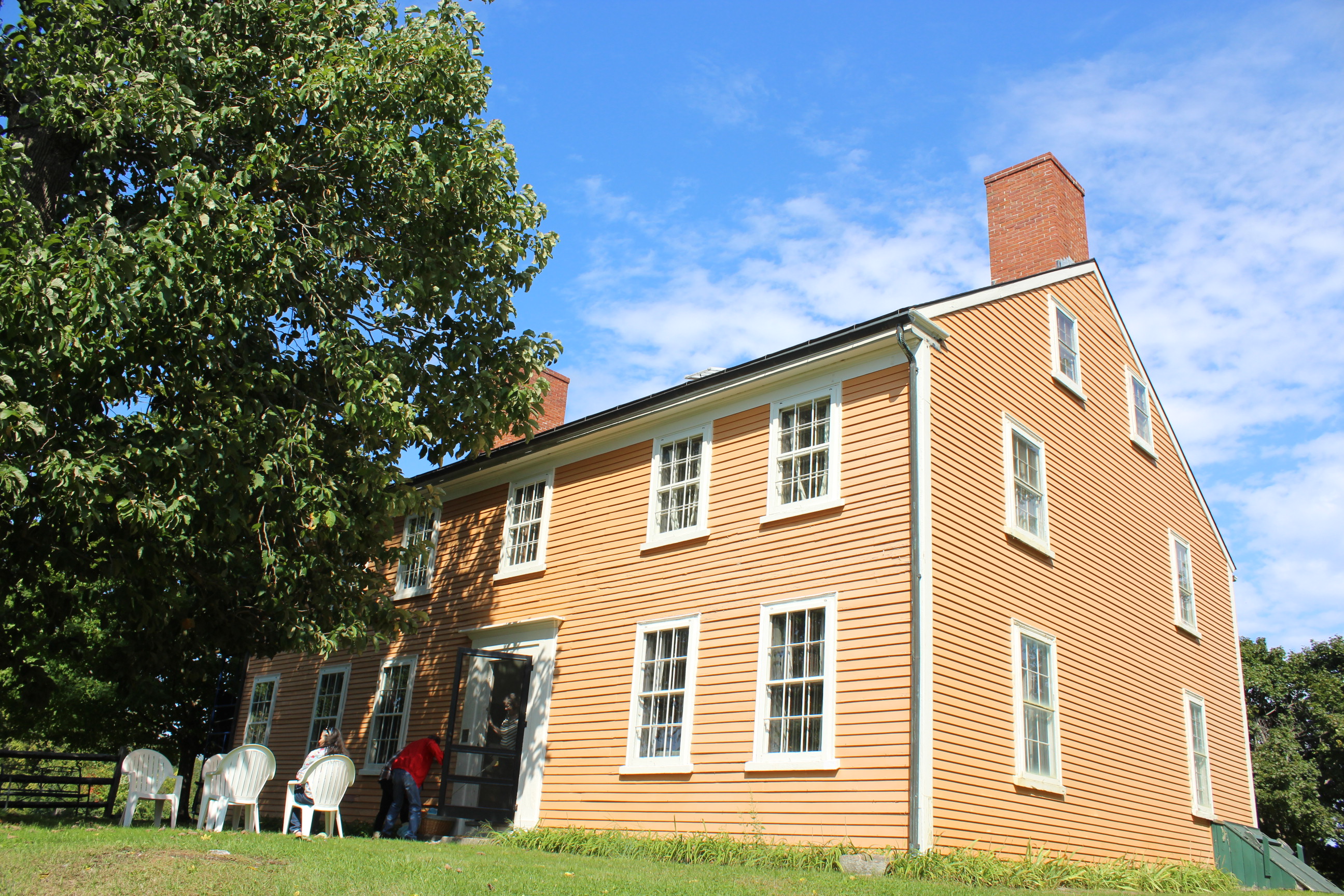Cogswell’s Grant was the summer home of preeminent collectors of American decorative arts Bertram K. and Nina Flatter Little. In 1937 they purchased a 1728 farmhouse with a 165-acre property overlooking the Essex River . 
After their deaths (1993), the Littles’ left their collection to Historic New England, which opened it to the public in 1998.

Every room is filled with antiques dating from the 1700 and 1800’s , for 60 years, the Littles collected Americana they found beautiful and curious. there are boxes—wooden, tin, and Shaker-made, birds and eggs: clay and wooden statues and decoys of sandpipers, terns, ducks, and cranes fill shelves and nooks, early lamps and candle holders, rugs, farm tools, lanterns, clocks, redware pottery, painted folk art and furnishings—and plenty of portraits.


 Acorn clock- coveted by collectors for its rarity. an example of mass-produced Connecticut clocks during their transition from weight- to spring-drive. The use of the spring-drive meant that manufacturers no longer had to build elongated cases to accommodate falling weights. The Forestville Manufacturing Company made acorn clocks like this one from 1847 to 1850.
Acorn clock- coveted by collectors for its rarity. an example of mass-produced Connecticut clocks during their transition from weight- to spring-drive. The use of the spring-drive meant that manufacturers no longer had to build elongated cases to accommodate falling weights. The Forestville Manufacturing Company made acorn clocks like this one from 1847 to 1850.
 Hat Boxes- Made by famous New York City hatmaker Elisha Bloomer in the early to mid 19th century. Crescent shaped, covered with paper stenciled with floral and scroll design.
Hat Boxes- Made by famous New York City hatmaker Elisha Bloomer in the early to mid 19th century. Crescent shaped, covered with paper stenciled with floral and scroll design.


 1870 Primitive Windsor Hoopback armchair.- One way to distinguish the English Windsor (16th century) and the American Windsor (commonly made in the 18th century) is that the seat in the English chair is usually not as thick as American Windsors.
1870 Primitive Windsor Hoopback armchair.- One way to distinguish the English Windsor (16th century) and the American Windsor (commonly made in the 18th century) is that the seat in the English chair is usually not as thick as American Windsors.
 Shaker Boxes – Most of the boxes were made by the Shaker religious leaders, the male Elders, traditionally finished with milk paint made from milk casein, tinted with earth pigments. Milk paint is incredibly durable, lasting hundreds of years when used indoors.
Shaker Boxes – Most of the boxes were made by the Shaker religious leaders, the male Elders, traditionally finished with milk paint made from milk casein, tinted with earth pigments. Milk paint is incredibly durable, lasting hundreds of years when used indoors.

Threaded Candle Stand- 19th century. An adjustable double candle stand in oak and cherry, with a threaded and turned standard, rising on tripod turned legs.


American Redware- Redware, or red earthenware, is a clay-bodied ware heated in a low-fired kiln at 1,700 to 1,800 degrees Fahrenheit; higher temperatures would melt the clay. Other earthenwares such as the yellow and white variety are made from clay composed of different mineral deposits; they are fired at higher temperatures and are impervious to liquids
The clays needed for redware production are found in much of the United States. Whether the clay is gray, blue, yellow, or red when dug from the ground, the iron deposits in the clay turn it the characteristic color of red when fired. At times this color varies from a red-brown to orange, depending on firing temperature and mineral content of the clay.






